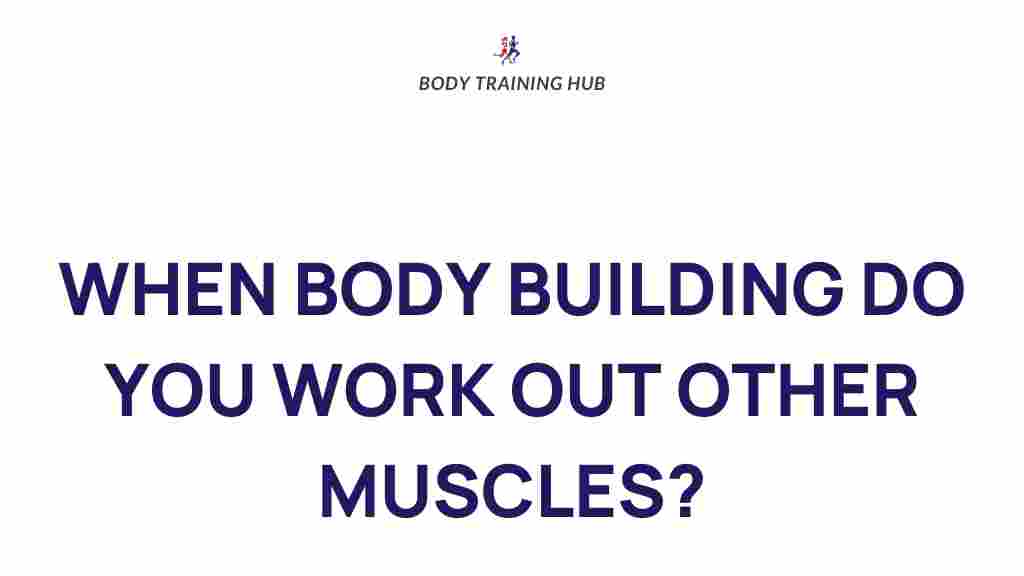Unleashing the Power of Compound Exercises
When it comes to maximizing your strength training and overall fitness routine, few methods are as effective as incorporating compound exercises. These versatile movements engage multiple muscle groups, making them essential for anyone looking to develop a comprehensive full body workout. In this article, we will explore the benefits of compound exercises, how to implement them into your fitness regimen, and tips for troubleshooting common challenges.
What Are Compound Exercises?
Compound exercises are movements that involve two or more joints and engage multiple muscle groups simultaneously. Unlike isolation exercises, which target a single muscle group, compound exercises allow you to work on strength, coordination, and functional fitness all at once. Some of the primary benefits include:
- Efficiency: You can achieve a full body workout in less time.
- Increased strength: Engaging multiple muscle groups leads to greater muscle recruitment.
- Enhanced calorie burn: More muscles working means more calories burned.
- Improved functional fitness: Prepares your body for real-life activities.
Key Muscle Groups Targeted by Compound Exercises
To fully appreciate the power of compound exercises, it’s important to understand the muscle groups they target. Here are some common compound movements and the muscle groups they engage:
- Squats: Primarily target the quadriceps, hamstrings, glutes, and lower back.
- Deadlifts: Engage the hamstrings, glutes, lower back, and upper back.
- Bench Press: Focus on the chest, shoulders, and triceps.
- Pull-Ups: Work the back, biceps, and shoulders.
- Overhead Press: Targets the shoulders, triceps, and upper chest.
How to Incorporate Compound Exercises into Your Fitness Routine
Integrating compound exercises into your fitness routine can be simple and rewarding. Follow these steps to create an effective plan:
Step 1: Assess Your Current Fitness Level
Before you start, it’s essential to evaluate your current strength and conditioning level. This will help you determine the right weights and repetitions for your workouts. Consider whether you are a beginner, intermediate, or advanced lifter.
Step 2: Select Your Compound Exercises
Choose 3-5 compound exercises that you enjoy and that align with your fitness goals. Here’s a sample list to get you started:
- Squats
- Deadlifts
- Bench Press
- Push-Ups
- Pull-Ups or Bent Over Rows
Step 3: Create a Balanced Workout Plan
Design a workout plan that includes compound exercises along with accessory movements. A balanced routine might look like this:
- Day 1: Squats, Lunges, Leg Press
- Day 2: Bench Press, Push-Ups, Tricep Dips
- Day 3: Deadlifts, Pull-Ups, Rows
- Day 4: Overhead Press, Lateral Raises
Step 4: Focus on Form and Technique
Proper form is critical in strength training to prevent injuries and maximize effectiveness. Consider working with a trainer or using online resources to learn the correct techniques for each exercise.
Step 5: Progress Gradually
Start with lighter weights to master your form, and gradually increase the weight as you become more confident. Aim for 3-4 sets of 6-12 repetitions for each exercise, depending on your goals.
Step 6: Monitor Your Progress
Keep track of your workouts and note your progress. This will help you stay motivated and make adjustments as necessary. You can use a fitness tracker or a simple journal to record your achievements.
Troubleshooting Common Challenges
As you incorporate compound exercises into your routine, you may encounter some challenges. Here are some common issues and solutions:
Issue 1: Difficulty with Form
If you struggle with maintaining proper form, consider these tips:
- Use lighter weights until you feel confident.
- Watch instructional videos online for visual guidance.
- Ask a trainer or experienced friend for feedback on your form.
Issue 2: Muscle Soreness
Feeling sore after workouts is common, particularly when trying new exercises. To manage soreness:
- Incorporate rest days into your routine.
- Perform dynamic stretches before workouts and static stretches afterwards.
- Stay hydrated and consider foam rolling to relieve tension.
Issue 3: Time Constraints
If you have a busy schedule, consider these strategies to fit in your workouts:
- Opt for high-intensity interval training (HIIT) with compound exercises.
- Plan shorter, more focused workouts that prioritize efficiency.
- Combine exercises into supersets to save time.
Additional Resources
For further reading on strength training and fitness routines, check out this comprehensive guide to strength training basics. You can also explore community forums or fitness apps for additional support and workout ideas.
Conclusion
Incorporating compound exercises into your fitness routine is an excellent way to enhance your strength, engage multiple muscle groups, and achieve a balanced full body workout. By following the steps outlined in this article, you can effectively implement these movements into your training, troubleshoot common challenges, and monitor your progress for optimal results. Remember, consistency is key, and with dedication, you will unleash the power of compound exercises for a healthier, stronger you!
This article is in the category Strength & Recovery and created by BodyTraining Team
